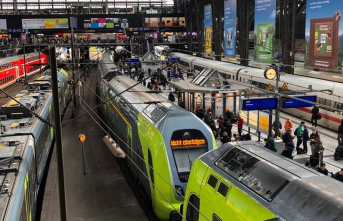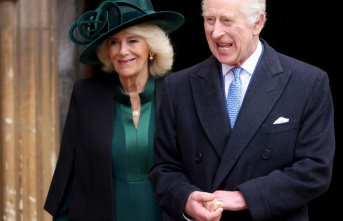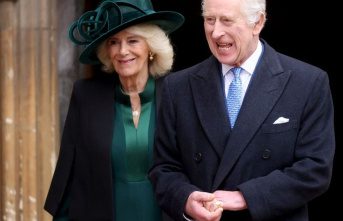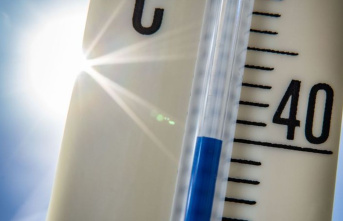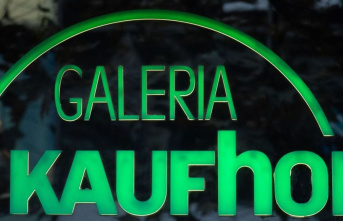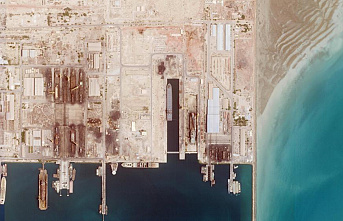Camp neighborhood. It was the eighties. Madrid was beginning to remove its grayness between heels and syringes, but also thanks to artists from various disciplines who did not know of the future transcendence. Campamento, a neighborhood like any other in Madrid, was at that time too far from the capital of the world, and that is why many art historians do not understand that the movement of Iberian urban writers has so many concomitance with what happened in New York , in Los Angeles. The movement that would make Juan Carlos Argüello, Muelle, an icon of the Movida, and a firm that for many opens the windows of nostalgia for a time when freedom, an old unknown, settled down.
In the way that he could, in a hairstyle or in a porous brick wall.
El Muelle, unintentionally, was one of those creators who turned the civil servant and sad capital into something else. His brother Fernando knows a lot about that, who guards his legacy, scattered, in Madrid and other cities. That is why whoever wants to assess the context of El Muelle must necessarily go through the studies at Tablada 25, in the heart of the Tetuán neighborhood. And see that in room 16 a signature of our protagonist is preserved, guarded and protected by a methacrylate. And it is that, Fernando remembers between posters of the Movida and the chords of Gabinete Caligari, that the battery was the other passion of Muelle in a group they called Exit of Emergency.
And we have to return to Campamento, to Carazo street where the City Council will soon place a commemorative plaque. Go back to the early eighties and think of Muelle as a young man with a very recognizable gait, hence a stall in the area, Pepeíllo, gave him the name and half posterity. So sonorous was the nickname, that Juan Carlos Argüello assumed it by forming himself in those blue cardboard folders of the institute. From the folder to the wall was the evolution, and from there to his brand, which he recorded, and which is a reminder that this city was countercultural.
Miguel Trillo, renowned photographer of the Movida, wants to remember Muelle as someone who "has ended up on the altars because he was, if not the only one, then the first in the 80s to leave his signature on the walls with insistence, daring and style that turned his nickname into a street brand of the new times of a decade -the 80s- in which Madrid gained international appeal». Although his story goes much further. The evolution of his style, a subsequent awareness of posterity and the mystery that other Spanish cities woke up to the signature. His brother gives an unknown fact; that of the existence of a Vespino with which they traveled the bull skin, until «Andorra arrived in 18 hours». A Vespino that should be declared a World Heritage Site.
Time passed, and his signature was dispersed in places that were well visible but that did not harm anyone. Water tanks and walls, that the issue was not vandalism but visibility. In Madrid, many disappeared, but some have been subjected to periodic restorations, such as the one on Calle Montera, visible among the motley of posters and neon lights. Or another in Malasaña. But his brother does remember another famous one in the Plaza de las Descalzas in which Muelle congratulated the parties in his style: “Grafalicidades del Muelle”.
Later, logically, the recognitions that were not those deserved by someone who by serendipity gave rhythm to the walls of Madrid, who without hooliganism humanized the streets. This is what Ramón Márquez, Ramoncín, says, that "what he earned as a drummer he spent on paint cans", something that also gives an idea of the strength of passion. Ramoncín also remembers it with his girlfriend and suddenly taking out the marker and stamping his signature on nothing. Once Ramoncín hunted down Muelle in Montera 13, and you have to imagine that meeting between two priests of the Movida, casual and magical, like everything that happened in those times.
Twenty-seven years have passed since his early death, and no one is able to illuminate what would have become of Juan Carlos, of his style, of the gradual domestication of his strokes and his entry, why not, into the channels of art galleries. His brother Fernando in Tablada 25, in the studio, fixes the arrow of a three-dimensional Pier while Gabinete Caligari continues to play in the background between posters of the same group, and photos that also contain a graffiti of Argüello defying time.
Tributes to Muelle arrive late, but they arrive, in that poetic justice of writers (they are called that, not graffiti artists), and in the Plaza Mayor a commemorative stamp is presented at the National Fair of the branch. The label is presented with a 'performance', Paco Reyes, a graffiti artist, paints a pier on a canvas while reflecting out loud that he is no longer old enough to put on his hood and go 'decorate' the city. The image is curious, the security members ask for a selfie with Reyes, who tries not to touch his uniforms because his fingers are stained with paint. A painting that neither is nor was exactly cheap, today and in the Eighties. His brother smiles, and some graffiti artists come from the four corners of Spain.


